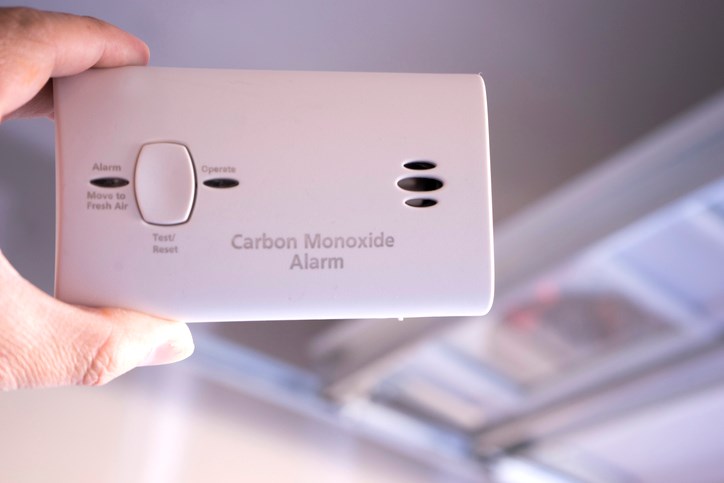WEYBURN – Smoke and carbon monoxide alarms will be required in all residences in Saskatchewan as of July 1, 2022, including any buildings that have residential occupancy of any kind.
Prior to this requirement taking effect, the City of Weyburn has put out a questionnaire with all utility bills, asking residents if they have all of the alarms that are required. If the questionnaire is returned by Feb. 11 to the city, the respondent will be eligible for a prize.
The province’s new rules stipulate the number and type of each kind of alarm to be used in a residence or residential building. Smoke alarms are required on each floor level, even if there are no bedrooms on them, and carbon monoxide alarms are required on each floor level, and within five metres of bedrooms.
An example is for a single-storey two-bedroom residence with a basement, the requirement is for two CO alarms, and for smoke alarms, the owner would need at least five, with one to be in every bedroom and one in each hallway serving the bedrooms.
Asked why these updates are being required by the province, City building official Amanda Kaufmann explained, “Prior to 1988 there were no requirements for smoke or carbon monoxide alarms. These alarms play a vital role in providing safe and healthy homes and is a priority in building safe communities.”
In regard to carbon monoxide, which is an invisible poisonous gas with no odour, she noted, “It is produced when fuel burning appliances, such as wood stoves, furnaces, water heaters, etc. malfunction. Between 2018 and 2020 there were 1,200 CO incidents reported to SaskEnergy annually.”
Those who have too much exposure to CO can experience symptoms like confusion, drowsiness, loss of consciousness, brain damage and even death if it’s not detected.
It should be noted that you are only required to have carbon monoxide detectors if there is a fuel-fired appliance within the dwelling or an attached garage. 

In addition, a lot of the household items available today, and many newer homes, have higher fire hazards that people may not be aware of. A lot of items are a lot more synthetic and flammable, meaning when caught on fire they burn a lot quicker and have more deadly toxins released into the home. These can be items such as furniture, drapery, clothing, cabinetry, etc. 

Any new alarms installed in order to meet these requirements do not need to be interconnected or hard wired. Owners can purchase new smoke or carbon monoxide alarms at most typical hardware stores. 

All new alarms must conform to CAN/CSA – 6.19 “Residential Carbon Monoxide Alarming Devices” and CAN/ULC – S531 “Smoke Alarms”. 

Asked who will be paying for these alarms, Kaufmann noted that under the provincial regulations, the owner of the residence, suite or of the building containing residential space is responsible for installing and maintaining all of these alarms.
In regard to enforcement of the new regulations, she said, “Enforcement hasn't been discussed at this time. We are going hard with the education to the public, then in the fall we will work on an enforcement piece. We are waiting for more information or direction from the province.”




